Do Birds Dream? Well, it’s a question that has puzzled bird enthusiasts and dream analysts alike. From chirpy lullabies to midnight squawks, these feathered creatures have us wondering.
In this whimsical journey, we’ll delve into the mysterious world of avian dreams, uncovering surprising insights and exploring whether their slumber is filled with flying adventures or just a beak-full of Z’s.
Get ready to spread your wings and embark on this feathery quest!
Table of Contents
- 1 Definition of Dreams
- 2 Overview of Bird Behavior
- 3 Question: Do Birds Dream?
- 4 The Science of Bird Sleep
- 5 Evidence of Bird Dreams
- 6 Types of Bird Dreams
- 7 The Importance of Bird Dreams
- 8 Conclusion:
- 9 FAQs: Do Birds Dream?
- 9.1 Do birds dream like humans do?
- 9.2 How can we tell if birds are dreaming?
- 9.3 What do birds dream about?
- 9.4 Are bird dreams important for their well-being?
- 9.5 Do all birds dream?
- 9.6 How long do birds dream during sleep?
- 9.7 Do baby birds dream differently from adults?
- 9.8 Can birds have nightmares?
- 9.9 Do birds have sleep disorders that affect their dreaming?
- 9.10 Are there any ongoing research studies on bird dreaming?
- 10 Author
Definition of Dreams
Before exploring this question in detail, it’s important to define what we mean by “dreams”. Dreaming is a phenomenon that occurs during sleep and is characterized by a series of mental images, sensations, or emotions that are often difficult to explain or interpret.
Dreams can be vivid or vague, pleasant or disturbing, and they can involve all sorts of experiences – from flying through the sky to being chased by monsters.
While dreams have been studied extensively in humans and some mammals like rats and cats, there is relatively little research on dreaming in birds.
This makes it difficult to determine if their behavior during sleep is similar to that observed in other animals.
Overview of Bird Behavior
Birds are diurnal animals, which means they are active during the day and sleep at night. However, the amount of sleep they require varies depending on factors such as age, species type, time of year and environmental factors.
Like humans, many birds have a circadian rhythm that regulates their sleep-wake cycle.
For example, migratory birds typically require more REM (Rapid Eye Movement) sleep before migration than after migration, when they may need more NREM (Non-Rapid Eye Movement) sleep.
Birds also exhibit interesting sleeping behaviors such as unihemispheric slow-wave-sleep (USWS), which allows them to keep one half of their brain alert while the other half sleeps, so they can respond quickly to potential threats while still getting enough rest.
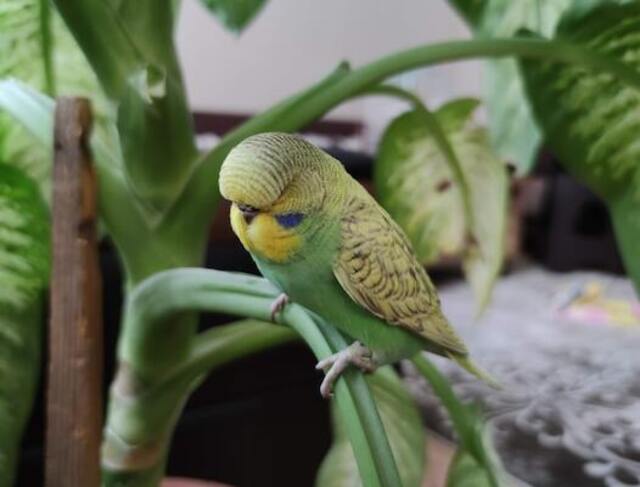
Question: Do Birds Dream?
Despite the lack of research on avian dreams, there have been some observations that suggest birds might indeed dream.
For example, when birds are in REM sleep, they display similar characteristics to those observed in humans and other mammals during dreaming, such as rapid eye movements (REM) and muscle paralysis.
However, just because birds exhibit similar behavior during sleep doesn’t necessarily mean they are dreaming.
It’s possible that their brain waves may be associated with other functions like memory consolidation or even behavioral conditioning.
The question of whether or not birds dream is a fascinating one that has yet to be fully answered. In the next section, we’ll explore the science of bird sleep and how it relates to dreaming.
The Science of Bird Sleep
Sleep is a fundamental aspect of animal behavior, and birds are no exception. In fact, birds are known for their unique sleep patterns, which differ significantly from those of mammals.
As in mammals, bird sleep has been divided into different stages based on electroencephalographic (EEG) readings. These stages are non-REM sleep (NREM) and REM sleep.
Different Stages of Sleep
During NREM sleep, birds experience slow-wave EEG activity, but the frequency and amplitude of these waves may vary.
It is a restorative phase of sleep that promotes tissue growth and repair, and birds exhibit both unihemispheric and bihemispheric NREM sleep.
During unihemispheric NREM sleep, one hemisphere of the brain sleeps while the other remains awake to monitor the environment for potential dangers.
Additionally, birds experience rapid eye movements beneath closed eyelids during REM sleep, but unlike humans who spend about 20% of their total sleeping time in REM sleep, most birds spend less than 10% in this stage.
Muscles of birds exhibit a lack of tone or atonia during REM sleep, which can lead to falling off perches or tree branches, as reported by bird owners.
These sleep characteristics illustrate the differences between mammalian and avian sleep patterns.
REM Sleep in Birds
One key difference between mammalian and avian REM sleep is that birds exhibit much shorter durations of this stage.
Another unique aspect of avian REM lies with their physical response; during this phase their eyes move rapidly but they do not experience muscle atonia like many mammalian species do.
The functional significance remains unclear still.
Experiments have shown increased levels of histamine release which prompts wakefulness during the day or night, while decreased releases promote uninterrupted periods of deep restful slumber throughout the bird’s normal cycle.
Brain Activity During Sleep
Brain activity during sleep is highly complex in birds due to their complex brain structure. Neurophysiological recordings have demonstrated that different areas of the bird brain are involved in different sleep stages.
The dorsal ventricular ridge (DVR) in the bird’s telencephalon is activated during both REM and unihemispheric NREM sleep.
During these stages, the DVR is responsible for analysis of information and decision-making.
Gaining a better insight into the avian sleep cycle can provide not only information about how birds rest, but also how their ecological niches can affect them.
Understanding the mechanisms and functions of these different stages of sleep in birds can also offer insights into the evolution of sleep and may have practical applications for animal conservation and management strategies.
Birds exhibit both REM and NREM sleep, each stage distinguished by various changes in brain activity patterns, including EEG characteristics.
During REM sleep, for example, birds experience a complete absence of muscle tone or atonia, which can result in falling off perches or tree branches, as observed in pet birds by their owners.
Furthermore, during unihemispheric NREM sleep, one hemisphere of the bird brain sleeps while the other hemisphere remains awake to monitor the environment for potential dangers, which is an exceptional feature of bird sleep.
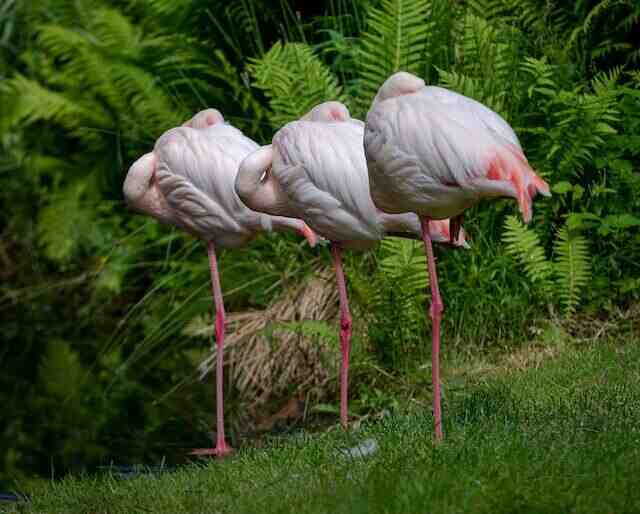
Evidence of Bird Dreams
Observations from Avian Experts: A Window into Bird World’s Night-Time Activity
Birds, like humans, experience different stages of sleep. During non-REM sleep, birds tend to relax and lower their metabolic rate.
However, during REM sleep, birds show increased brain activity and muscle twitches that suggest they are dreaming.
Avian experts have observed birds exhibiting a range of behaviors while they sleep, such as singing or chirping quietly to themselves.
These observations provide insight into what kind of internal experiences birds may have while asleep.
One example is the African gray parrot bird named Alex, who was famous for being able to understand human language and communicate with his trainer in English.
His trainers reported that during his REM sleep cycle, he would mutter words and make the same sounds he was trained to say when awake.
This gives us an idea that birds may dream about the things they experience in their waking life.
Neurological Studies on Bird Brains: Mapping Brain Activity During Sleep
Neurological studies have shown that bird brains possess similar structures and functions as mammalian brains that allow for dreaming during REM cycles.
The hippocampus is a part of the brain involved in forming memories, which suggests that the dreams could be related to consolidation or processing information from experiences while awake.
Researchers have also used electrodes implanted in bird brains to monitor electrical activity during different stages of sleep and found strong correlations between brain activity during REM sleep and behavior changes indicating dream states, such as vocalization.
Another study on zebra finches showed how changes in vocalization patterns occurred due to interactions between sleeping birds even when physically separated by partitions, suggesting social learning might also take place during avian dreams.
Behavioral Changes During Sleep: The Clues Birds Leave Behind
Evidence for bird dreaming can also be seen through behavioral changes during sleep. After waking up, birds often exhibit significant changes in behavior, such as increased alertness or more vocalization.
This suggests that they may have had a dream that impacted their behavior.
Additionally, studies have shown that birds will often change positions repeatedly while sleeping, which indicates they are not in a deep sleep state throughout the night.
They may be experiencing different stages of sleep and dreaming intermittently throughout the night.
Overall, evidence from avian experts, neurological studies on bird brains and behavioral changes during sleep all suggest that birds do dream.
The next section will explore the different types of dreams birds may experience.
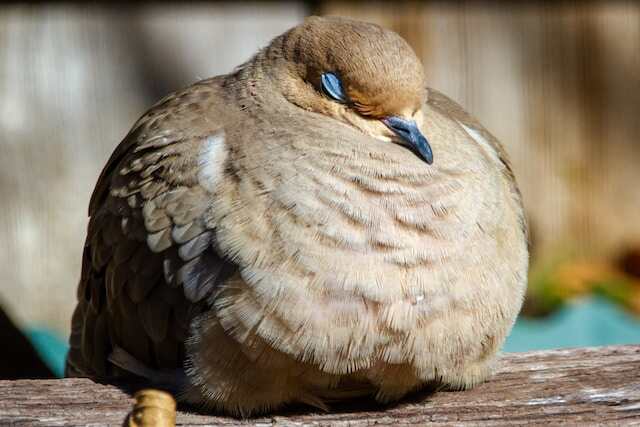
Types of Bird Dreams
Birds have different types of dreams, just like humans. While some birds dream about specific experiences or events, others dream about abstract concepts. Here are three types of bird dreams:
Species-Specific Dreaming
One type of bird dream is species-specific dreaming. This involves birds dreaming about activities that are specific to their species.
For example, a hawk may dream about soaring through the sky and hunting prey, while a chicken may dream about scratching for food and pecking at the ground.
Memory Consolidation in Birds
Another type of bird dream is memory consolidation. Like humans, birds use sleep to consolidate memories from their day-to-day lives.
During sleep, the brain replays important events and experiences from the day, helping to solidify memories and make them more permanent.
In one study on zebra finches, researchers found that birds who were exposed to a new song during the day had increased activity in certain parts of their brains during sleep.
This suggests that they were consolidating memories related to the new song they had learned.
Creative Imagination and Problem-Solving
Birds also have dreams that involve creative imagination and problem-solving. In these dreams, birds use their imaginations to come up with solutions to problems or challenges they may face in real life.
For example, a crow may have a dream where it figures out how to solve a puzzle or find food in an unusual way.
These types of dreams may help birds develop problem-solving skills and improve their ability to adapt to changing environments.
Overall, these different types of bird dreams suggest that avian sleep serves many important functions beyond simply resting the body.
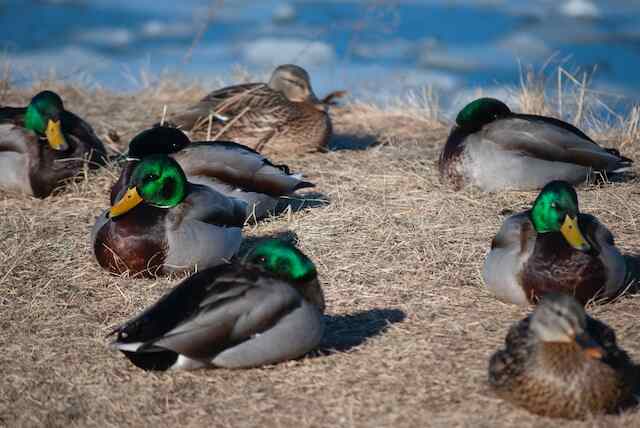
The Importance of Bird Dreams
Benefits to Physical Health and Survival Skills: The Importance of REM Sleep for Birds
Much like humans, birds need their sleep in order to maintain overall health. During REM sleep, birds receive a number of benefits that contribute to physical health and survival skills. One such benefit is the strengthening of the immune system.
During this stage, birds experience an increase in T-cells and antibodies, which help them fight off infections and diseases. Another important benefit of REM sleep for birds is the consolidation of motor skills.
This means that during this stage, the brain processes movements learned during the day, helping to reinforce them for future use. This is especially important for young birds who are learning how to fly or hunt.
In addition to these benefits, REM sleep has also been linked to an increase in problem-solving abilities.
Birds who experience more REM sleep have been shown to be better at solving puzzles and navigating complex environments than those who do not get enough REM sleep.
Contribution to Social Development and Communication Skills: The Role of Dreaming in Socialization
Birds are social creatures who rely on communication with others in their group for survival. Studies have shown that dreaming plays an important role in social development and communication skills among birds.
During sleep, birds have been observed making vocalizations that are similar to those made when they are awake.
This suggests that they may be practicing social interactions and communication skills while they dream. Dreaming may also play a role in the formation of social bonds among birds.
Research has shown that when two birds share a roosting site, they are more likely to synchronize their sleeping patterns with one another than with other members of their group.
This synchronization may be due in part to shared dreaming experiences.
Furthermore, some species of bird are known to dream about mating rituals or courtship behaviors during breeding season.
This suggests that dreaming plays a role in the formation of social bonds and reproduction among birds.
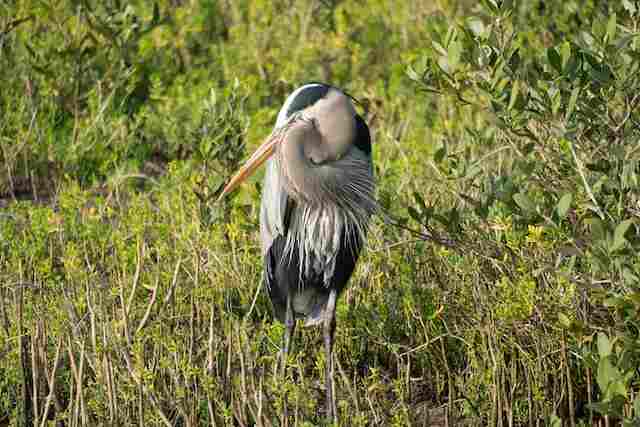
Conclusion:
Summary of Key Points
Throughout this article, we have explored the fascinating world of avian dreams. We have discussed the science of bird sleep, evidence of bird dreams, and types of bird dreams.
We have also examined the importance of bird dreams, highlighting their contribution to physical health and survival skills as well as social development and communication skills. We learned that birds experience different stages of sleep much like humans do.
During REM sleep, birds show similar brain activity patterns to humans and other mammals. Researchers have found evidence that suggests birds may dream during this stage of sleep.
Observations from avian experts in combination with neurological studies on bird brains provide further evidence for the existence of bird dreams.
Studies indicate that birds may experience species-specific dreaming, memory consolidation during sleep, and creative imagination for problem-solving.
Implications for Future Research
There is still much to learn about avian dreaming, but the implications for future research are promising.
By studying avian dreams more thoroughly, researchers can shed light on new discoveries about how birds learn, communicate and adapt to their environment.
In addition to its scientific potential, there is a practical element too: understanding how different species dream could help us protect them better in their natural habitats or help captive animals get better rest.
Final Thoughts on the Fascinating World of Avian Dreams
The idea that birds dream is both intriguing and awe-inspiring. Imagine a flock of geese flying together in V-formation in our minds, or hummingbirds dancing with colorful plumage as they dream up new strategies for gathering nectar.
But beyond our imagination’s limits lie complex neural functions – a reminder that even seemingly simple creatures have rich internal lives.
As we continue to study these amazing creatures’ behavior more deeply in the future – including their sleeping habits – it’s clear: there is still much to learn about the remarkable world of birds.
However, it’s also abundantly clear that the more we learn, the more our appreciation for these creatures will grow – and hopefully, so will our efforts to protect them.

FAQs: Do Birds Dream?
Do birds dream like humans do?
Birds do experience a form of sleep called REM (rapid eye movement) sleep, which is associated with dreaming in humans. While it’s difficult to know the content of their dreams, studies suggest that birds likely engage in some form of dreaming during REM sleep.
How can we tell if birds are dreaming?
Observing bird behavior during sleep can provide clues. During REM sleep, birds may exhibit twitching movements, rapid eye movements, and occasional vocalizations. These signs suggest that birds are experiencing some form of dreaming, similar to humans.
What do birds dream about?
We cannot know for certain what birds dream about, since we cannot ask them directly. However, it’s believed that their dreams may involve activities and experiences related to their daily lives, such as flying, foraging, or interactions with other birds.
Are bird dreams important for their well-being?
While the exact purpose and importance of dreams in birds are not fully understood, sleep, including REM sleep and associated dreaming, is crucial for their overall health and well-being. It plays a role in memory consolidation, learning, and emotional regulation.
Do all birds dream?
Sleep patterns can vary among bird species. Most birds, including songbirds and parrots, experience REM sleep and are likely to dream. However, some birds, such as birds of prey, exhibit unihemispheric sleep, where only one hemisphere of the brain sleeps at a time, and their dreaming patterns are less clear.
How long do birds dream during sleep?
Birds, on average, spend around 15-20% of their sleep time in REM sleep, which is associated with dreaming. The exact duration of their dreaming periods can vary depending on the species, age, and individual bird.
Do baby birds dream differently from adults?
It’s believed that young birds, particularly during their developmental stages, may experience more REM sleep and dreaming compared to adults. This increased dreaming may support their brain development and learning processes.
Can birds have nightmares?
While we can’t know for certain, it is possible that birds, like humans, may experience unpleasant dreams or nightmares. Factors such as stress, fear, or negative experiences could potentially influence the content of their dreams.
Do birds have sleep disorders that affect their dreaming?
Birds can suffer from sleep disorders, just like humans. Conditions such as sleep deprivation, sleep fragmentation, or disturbances in their sleep patterns can potentially affect their REM sleep and dreaming experiences.
Are there any ongoing research studies on bird dreaming?
Researchers continue to study avian sleep patterns and dreaming to gain a better understanding of birds’ cognitive processes and the functions of REM sleep. Ongoing research aims to explore the intricate relationship between sleep, dreaming, and bird behavior.


